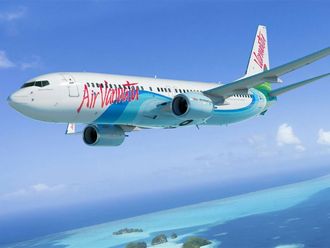Canberra: Australia’s draft plan to improve water quality on the Great Barrier Reef has ignored official government scientific advice, which was published by the Queensland and federal governments alongside the new plan this week.
The draft Reef 2050 Water Quality Improvement Plan is an update to the plan released in 2013, and provides new water quality targets for specific parts of the reef, but has very few other concrete changes overall. That is despite the plan itself acknowledging that “current initiatives will not meet water quality targets”, noting the “urgently needed” acceleration of efforts and explicitly stating that “a step change is needed”.
The plan repeatedly says it is “based on the best available independent scientific advice, as provided by scientific consensus statement 2017”. But that statement, published alongside the plan, is highly critical of the approach taken in the plan.
“Current initiatives will not meet the water quality targets,” the consensus statement says, calling for increased support and resources, as well as regulation to reduce agricultural run-off — a recommendation also made by a Queensland government taskforce.
In line with every other piece of scientific advice, the consensus statement concludes the reef is in poor and deteriorating quality, and lays the blame for much of the situation on water quality.
Scientists say that in the face of climate change and increased frequency and severity of bleaching on the Great Barrier Reef, improved water quality is urgently needed to relieve some of the pressures and to make the reef more “resilient”. The plan points to $2bn (Dh7.35 billion) being spent over 10 years by the Queensland and federal governments to protect the reef.
But roughly half of that is being spent on water quality. That is about one-tenth of what a Queensland government taskforce concluded was needed, a figure they said would still not allow the targets to be met. One member of the Reef Water Quality Independent Science Panel that wrote the consensus statement, Jon Brodie from James Cook University, said the governments were not listening to their own expert advice.
“In the end, the plan is not taking up the recommendations of the consensus statement at all,” Brodie said. Asked whether the money being spent on initiatives not in line with expert advice meant the governments were wasting $1bn, Brodie said:”That was asked recently by people from the government ... I think spending it as we are now ... is a bit silly.” Brodie said it was too late to spread the money across the entire reef and it was time to focus in on bits of the reef that might be able to be saved.
“The issue we have now is the coral is in terminal condition and the best we can hope for is to protect some parts of the coral on the Great Barrier Reef,” Brodie said. “We’re still spending a lot of money but we’re not achieving enough to provide resilience to the whole Great Barrier Reef, perhaps we could better spend it on providing resilience for just some of the coral.” T
he World Heritage Committee flagged its concern over reef water quality at its annual meeting in July, saying “the plan will need to accelerate to ensure that the intermediate and long-term targets of 2050 LTSP are being met, in particular regarding water quality”. Sean Hoobin from WWF-Australia said the governments were ignoring those concerns.
“There is no meaningful detail on the actions and investment needed to deliver promised cuts to Reef pollution,” he said. The minister for the environment and energy, Josh Frydenberg said in a statement: “By focusing our efforts on improving water quality, we are giving the reef the best chance to adapt and recover from the impacts of coral bleaching. “This new plan has an expanded scope and addresses all land-based sources of water pollution including run-off from urban, industrial and public lands, as well as from agricultural activities.”
The Queensland minister for the environment, Steven Miles, said the plan recognised the importance of people in creating change and included social, cultural and economic values for the first time. “The new plan sets water quality targets for each of the 35 catchments flowing to the reef using scientific modelling and other technical information to work out the pollution reduction targets based on what the Reef needs to be healthy,” Miles said.
— Guardian News & Media Ltd











